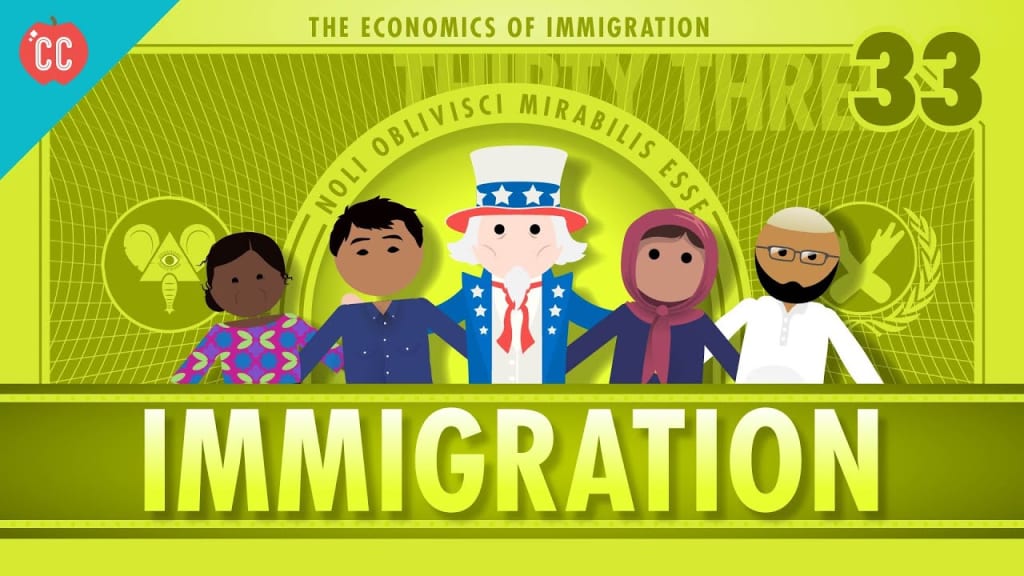Immigration Myths
Separating Fact from Fiction: Learning the Truth

Because of the migration of diverse peoples, the U.S. has become a great and powerful country. Today, immigration is not an easy process in the U.S. Historically, our ancestors’ main concern was getting over to this country. Once they landed, they landed.
Today, immigrants usually come into this country to work. However, they must go through several steps to make this happen. That is why it is important to see things from their perspective, or to place yourself in their shoes. Knowing what others go through themselves will help you debunk some of the current myths.
Illegal Immigration — Is It Really a Problem?
Many assume illegal immigration is an issue. However, many foreign-born citizens have legal permission to be here. Of the 43 million immigrants living in the U.S. in 2014, approximately 45% were naturalized U.S. Citizens.
Many of the people who were not naturalized were green card holders or living as legal permanent residents. These statistics are based on Pew Research data.
Statistics from Pew Research also show that around 27% of the immigrants, or about 11 million people, were not authorized to live in the U.S. However, some of these people entered with legal visas which expired.
The country with the most people who have stayed past their authorized stay is Canada. So, if you look at immigration in the U.S., most of the foreign-born people living here are legal.
Entry into the U.S. Is Not a Simple Process
Some people also believe that illegal entry into the U.S. is easy. That is not the case when you look at how immigration works. You have to submit a good deal of paperwork and follow some stringent rules to visit and eventually work and live in the U.S. All you need to do is speak to an immigration attorney to learn about the rules.
How It All Began
During the first century in the U.S., the country adopted an open immigration system — a system that included indentured servitude. According to the U.S. Citizens and Immigration Services (USCIS) website, free and open immigration was encouraged during the 1700s and 1800s in the U.S. This policy continued until the late nineteenth century, or after the Civil War, when some states started passing immigration legislation.
In 1875, the Supreme Court ruled that immigration should fall into the hands of the federal government. After this time, Congress started passing federal immigration laws. Alien Contractor Labor Laws in 1887 restricted some laborers from migrating into the U.S as did the Chinese Exclusion Act of 1882.
In addition, the Immigration Act of 1882 assessed a head tax of 50 cents on immigrants. The law excluded the admittance to people who were dependent on care and convicts.
During this period, collectors at U.S. Customs ports of entry collected the head tax while inspectors enforced the mandates of the Chinese Exclusion Act.
Included in the process was the collection of ship manifests. These manifests recorded the names of ship passengers coming into ports of entry. Both admissions and rejections were notated on the records.
Why Immigrants Enter the U.S. Today
Today, permission to immigrate and remain in the U.S. typically involves people who are well-trained in a skill where there is a short supply of workers. These people come to the U.S. because they have been offered a job by a U.S. company.
Other immigrants come to the U.S. to escape political unrest and persecution in their country or to join family living here. In some instances, immigrants have won green cards in the U.S. Green Card Lottery.
A One-of-a-Kind Lottery
The Green Card Lottery is synonymous with the U.S. Diversity Immigrant Visa Program and is a one-of-kind lottery. The U.S. has made it possible for foreign-born citizens to realize the American Dream by entering this contest.
The U.S. awards 55,000 green cards each year through the program. Having this card allows foreign-born citizens to reside and work permanently in the U.S.
Immigrants Must Speak and Write English Proficiently
Some people are under the impression that U.S. immigrants today do not want to learn or speak English. However, 35% of immigrants from as young as 5 years old do speak English well while around 20% can speak and write proficiently. This information comes from the U.S. Census Bureau.
People who have become naturalized U.S. citizens must overcome many obstacles, including travel, finding work, paying legal and naturalization fees, and learning English.
Moreover, immigrants must know English to complete the naturalization process and pass the verbal and written parts of a 100-question civics exam.
Therefore, the current demand to know English is far greater than what it was for immigrants in the past. Historians point out that the first immigrants tended to hold onto their cultural heritage and spoke their language of origin freely.
For example, German immigration in the U.S. was highest in the 1870s. However, around 700 newspapers were available in the German language as late as 1917 (or at the beginning of the First Word War).
How Immigration Has Affected the Workforce
Claims have been made that people from other countries are taking U.S. jobs from people born in the U.S. One nonpartisan group, the American Immigration Council, shows that no real connection exists between unemployment rates and immigrant workers.
Two important trends, better educational opportunities and the emergence of an aging workforce, have led to a decrease in applications by U.S. born workers.
Across the board, work-wise, U.S. born citizens outnumber immigrants who are naturalized and non-citizens, according to the U.S. Census Bureau. It is true — in some cases, employers employ undocumented immigrant workers, thereby exploiting the labor force so they can pay workers less money or avoid providing benefits. However, U.S. born citizens still outnumber the immigrant labor force in all job fields.
Paying Taxes
Another issue about immigration, or undocumented workers, deals with taxes. Most U.S. born citizens pay taxes. In fact, taxation is always on the mind of people in the U.S. and has been since the founding of this country. People pay sales tax, property taxes, and income taxes.
While some people believe undocumented immigrants do not pay taxes, this is not the case. Everyone, both illegal immigrants and U.S born citizens, pay taxes every time they buy consumable products or food. They also contribute to the payment of property taxes when they rent an apartment or buy a house.
One 2017 report from the Institute on Taxation and Economic Policy revealed that immigrants without documents pay an estimated $12 billion in local and state taxes annually.
In addition, according to the Social Security Administration (SSA), undocumented immigrants and their employers have paid $13 billion for social security — a benefit the immigrants will never receive.
Undocumented immigrants may receive medical care in emergencies as well as schooling. However, they are not eligible to receive food cards or welfare. Even immigrants who can show the proper documentation must wait five years before they receive these government supplements.
There Is No Guarantee
According to the fourteenth amendment to the Constitution, anyone born in the U.S. is automatically considered a U.S. citizen. Therefore, immigrant parents whose children were born in the U.S. can still be deported.
That is because a U.S. citizen must be at last 21 years old to petition for legal-resident status for a parent. This process is long and arduous, so there is still no guarantee that one of the four million immigrant adults who live with their U.S. born children will not be deported.
Taking a Harder Look at the Facts
Some reports have shed an unsavory light on immigration. The best way to view the issue is to learn more about what is true and what is heresy. By looking at things objectively, you can wipe the slate clean of any misgivings or incorrect assumptions. Facts are facts. Therefore, review the research and statistics first on immigration before coming to a conclusion.
Instead of making broad assumptions or listening to rhetoric, it is important to take a hard look at immigration data.
Author's Note:
Articles that Add Further Insights
To help me learn fact from fiction, I referred to data provided by the Economic Policy Institute. You can learn more about salient facts here: https://www.epi.org/publication/immigration-facts/.
Also, an article written in 2017, that appeared on the America's Voice Education Fund website, sheds further light on the difficulties faced by immigrants. You can learn more about the impact here - https://americasvoice.org/blog/immigration-101-why-immigrants-cant-just-get-legal/.
In Summation
Making generalized statements do not cut it where immigration is concerned. We need to put ourselves in the shoes of the people who have entered into the U.S. - those with and without papers. Immigration can be a complex and difficult process. Making assumptions does not unlock the hardships faced by people seeking the American Dream.
About the Creator
Donna Ryan
Experienced writer and editor. Subjects I've covered include health and fitness, home and gardening, technology, travel, business, and general news content.






Comments
There are no comments for this story
Be the first to respond and start the conversation.